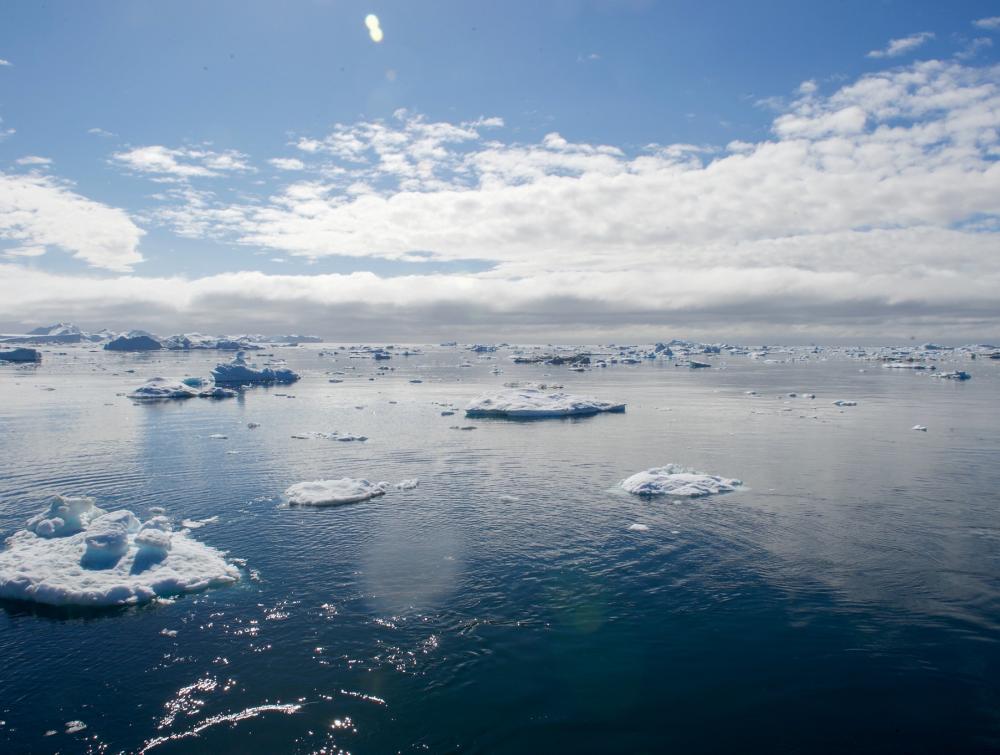Gradually addressing climate change is no longer an option; Trump helped make that so

Icebergs float off the port of Ilulissat, Greenland
Department of State, Flickr
Disastrous policies have erased our margin for error
Top scientists say we must hold global average temperature increases below 1.5 degrees Celsius to keep the climate crisis from tipping over into truly apocalyptic territory.
Right now, our chances of hitting that mark look pretty bad. We’ve spent the last 20 years increasing rather than gradually decreasing greenhouse gas emissions and have left ourselves very little room to turn it around. If we’d started around the year 2000, cutting by about 3 percent each year, we might be in solid shape. But as it stands, to hit the 1.5-degree limit, we’d need global emissions to fall by about 15 percent a year--every year--starting now. That’s going to be very difficult.
This graphic illustrates the challenge now facing us:
Imagine if you procrastinate and put off trimming the lawn each Sunday for 700 weeks in a row. What might have been a manageable task when done incrementally becomes all but impossible when left to compound. Right now, humanity is staring at a yard full of grass and weeds so overgrown they practically block out the sun...and our rusty old mower may simply not be up to the job.
Trump has been one of the worst offenders
President Trump’s record on climate change and conservation is clear. He was sown doubt about science at every opportunity and famously reversed at least 100 environmental rules in less than one term in the White House.
While the scope and relatively slow-developing nature of climate change makes it impossible to say “how much” of the crisis can be attributed to any particular policy or action (or president), and many of Trump’s attacks will yield long-lasting effects by their very nature, he has certainly been a champion of greenhouse gas pollution and an enemy of renewable energy.
Trump's rollback of Obama climate rules could result in a 3% increase in U.S. greenhouse gas emissions by 2035
It’s been estimated that Trump’s rollbacks of regulations like President Obama’s Clean Power Plan and fuel economy standards will cause the U.S. to dump an additional 1.8 billion tons of greenhouse gases into the atmosphere by the year 2035, representing a 3 percent rise over what projections would otherwise expect (remember, we need to be talking about drastic decreases at this point).
Trump can’t kill renewable energy or halt the market-driven decline of some fossil fuels—a few reasons for optimism—but he has presided over a slowing of many positive trends on that front, and at a time when we need to go all-in on making our energy cleaner. In President Obama’s two terms in office, carbon emissions from fossil fuels and other activities fell by 11 percent. The use of coal for energy decreased by 38 percent, and renewable energy generation went up by 44 percent. But under Trump, through 2019, carbon emissions fell by just 0.5 percent, coal use went down only 3 percent and renewable energy rose only 11 percent.
While Trump and the Republican party didn’t release a policy platform this year, they did signal that if re-elected, Trump plans to continue his “deregulatory agenda for energy independence”--a.k.a. slashing rules that are meant to protect health and the environment. That means more of the same fossil fuel agenda, and even less capacity to address climate change in the years ahead.
“Too late”? Not necessarily
Even if humanity were to wake up tomorrow morning, enact super-strict limits on fossil fuel use and ramp up renewable energy development, it would take a while for the climate to respond to our changing behavior. Research suggests that even with an immediate halt in carbon emissions, carbon dioxide already in the Earth’s atmosphere would continue trapping heat and warming the planet for hundreds of years. All that’s to say that a certain amount of climate change is already “locked in,” as are some of the most frightening consequences (for example, rising sea levels).
A study found that two Trump terms would set back global emissions reduction efforts by a decade
So is it “too late”? That might not be a useful frame for viewing the climate crisis anymore. We’re already reaping the dangerous fruits of decades’ worth of coal, oil and gas use; in that sense, we’ve already failed. But there isn’t a hard upper limit on how bad extreme weather, food insecurity and other climate change effects can get, and that means it’s still worth acting quickly and decisively to stanch the bleeding.
Obviously the awful path we’re on started long before Trump was elected. But he stands as the greatest exemplar among all presidents of the denial-and-delay approach, and he has helped reduce our margin for error to practically nothing, even as the public is starting to wise up to what’s at stake. Scientists recently released a study that projected our chances of meeting a 2-degree limit set out in the Paris Climate Agreement—a limit now considered insufficient to avoid disaster—and found that two terms of Trump would reduce those chances to “near zero” and set back global emissions reduction efforts by about a decade.
If Trump is re-elected, he will continue pushing fossil fuels and driving us even closer to the brink on climate change. If Joe Biden is elected, he will be able to reverse some of Trump’s damage with steps like banning new oil and gas permitting on public lands and waters, re-strengthening fuel economy standards and halting yet-un-finalized Trump rule rollbacks. Our situation will still be dire, but at least we’ll have a fighting chance.
